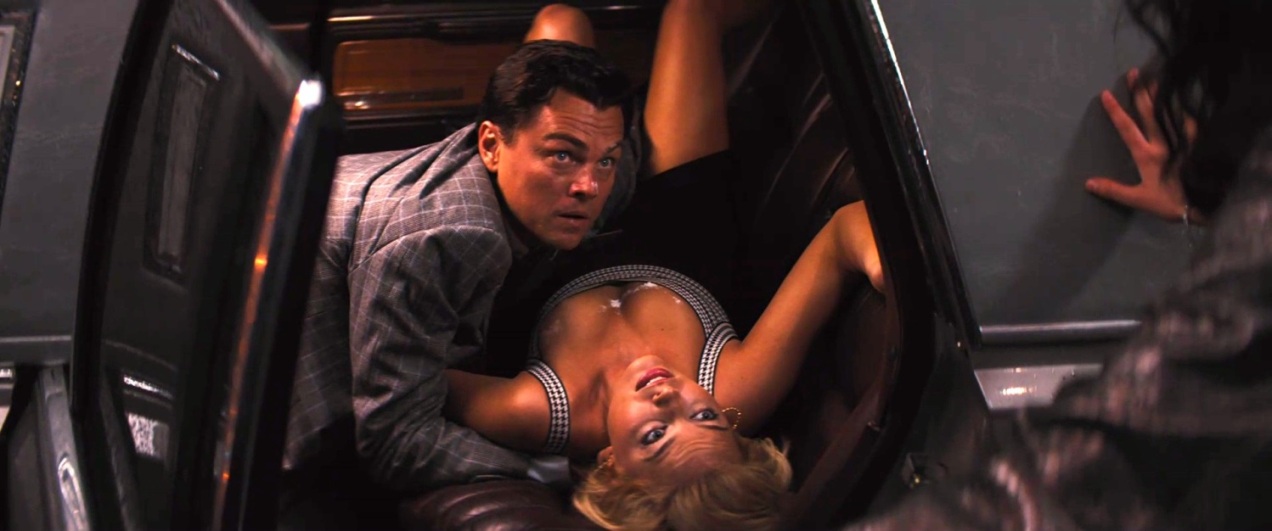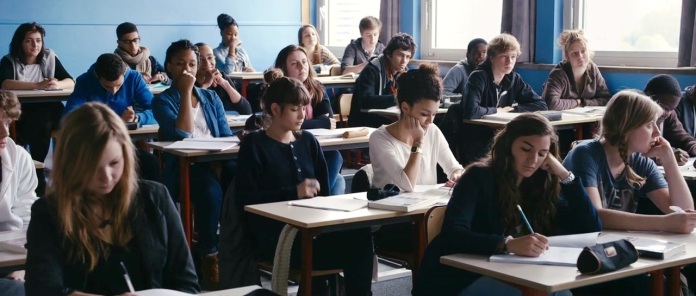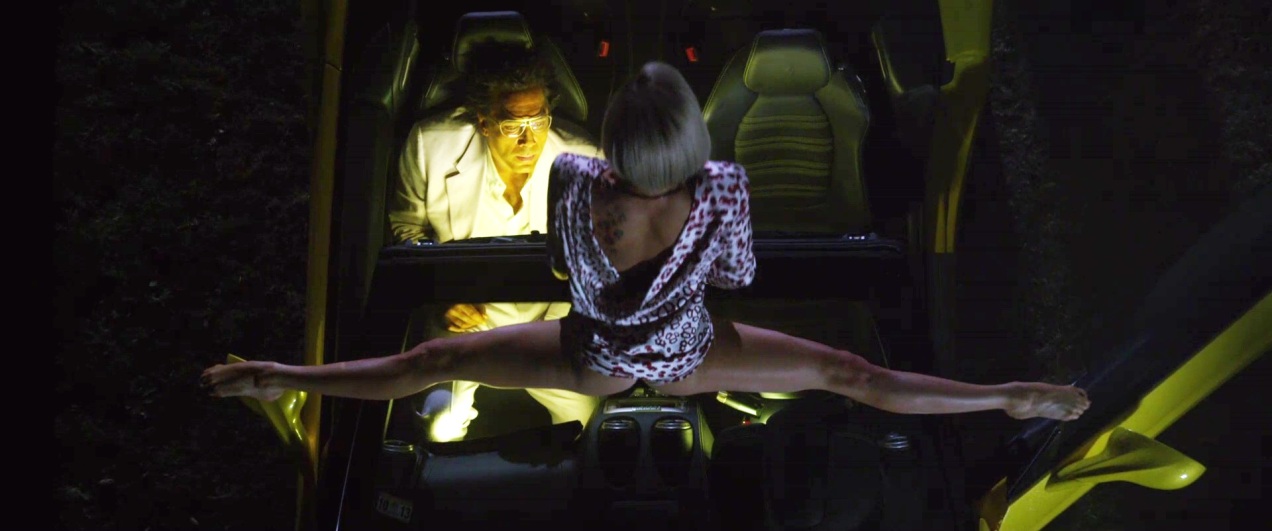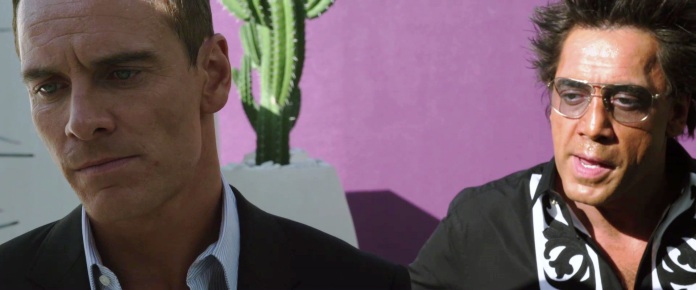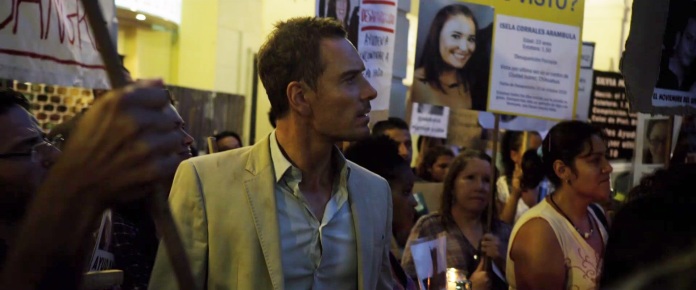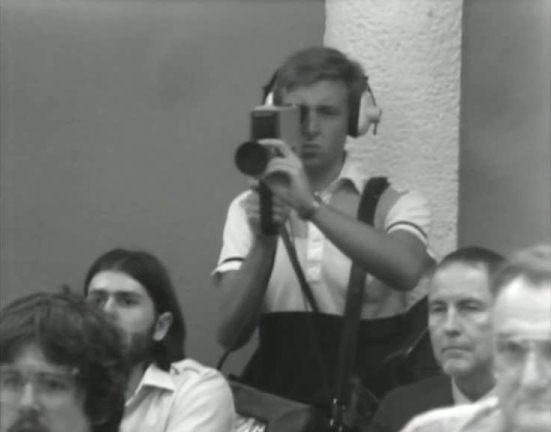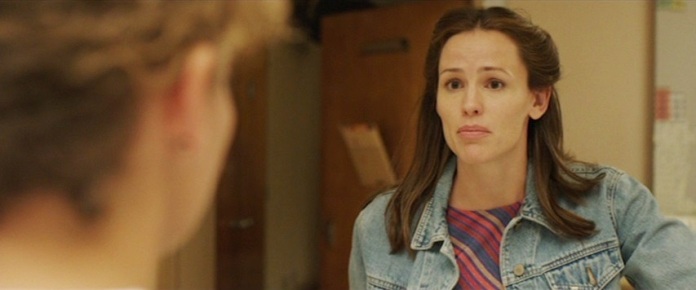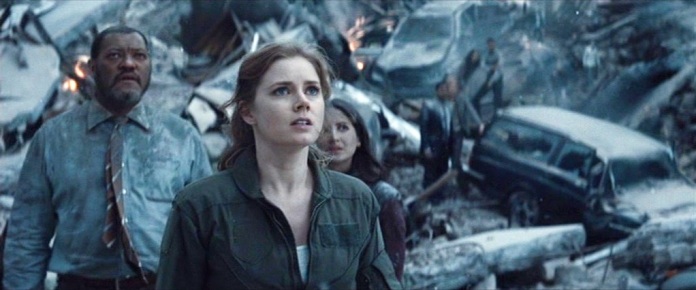.

.
Director: Martin Scorsese
By Roderick Heath
Martin Scorsese’s films that followed the heady, messy grandeur of Gangs of New York (2002) have all been enjoyable and beautifully made. Yet even the most ardent admirers, like me, could admit something was missing from them. That ornery, empirical attitude and fiery aesthetic edge that used to inflect and define Scorsese’s films was damped down in big, slick, good-looking entertainments like The Aviator (2004) and Hugo (2011), whilst The Departed (2006) and Shutter Island (2010) were genre exercises enlivened and enriched, but not transcended by the director’s sense of style. The price Scorsese seemed to have paid for admission at last as a Hollywood grandee was to leave behind provocation. The Wolf of Wall Street is almost reassuring as it erupts in classic Scorsese curlicues of rocket-paced editing and rampant profanity, but to a degree that provokes caution about a director possibly moving into self-satire and playing to his fans’ affections, as he did with The Departed. But no, The Wolf of Wall Street is Scorsese’s most fearsome, powerful, specific film in over a decade, a thunder blast of black-witted absurdism, a portrait of a way of life as perceived by an individual whose distorting perspective exemplifies that world. Scorsese got in trouble in some quarters for allowing entrance into Travis Bickle’s point of view with Taxi Driver (1976), and now The Wolf of Wall Street has upset some by doing the same thing for Jordan Belfort, entrepreneur and criminal. This confirms that Scorsese is back doing his real job—directing films that discomfort as well as entertain his audience and provoking their moral and aesthetic standards. Scorsese’s devils are charming motherfuckers.
.

.
Scorsese’s fifth collaboration with Leonardo DiCaprio casts the actor as Belfort, product of a blue-collar upbringing, son of “Mad” Max (Rob Reiner), a former cop turned PI. Belfort recounts his story in the same high-powered voiceover that Henry Hill used in Goodfellas (1990), and like Hill, occasionally breaks down the fourth wall. But whereas Hill was explaining and excusing himself all the time, Belfort is a better, cockier salesman, suddenly cutting short his spiel to grin smarmily at the audience, whom he treats exactly like his clients, assuring us we needn’t concern ourselves with the details. He’s got them down, and the results are presented for our amusement as torrents of lifestyle brags, including a formidable array of drugs he’s comfortably addicted to and keeps balanced like a juggler.
.

.
Belfort recounts his early days as a young wannabe stockbroker, landing a job at the prestigious L. F. Rothschild and negotiating the totem pole. He’s taken to lunch by his superior, Mark Hanna (Matthew McConaughey), the kind of guy who snorts cocaine at the table of the ritzy skyline restaurant they sit in and preaches the values of masturbation to Jordan for keeping cool in their maniacal occupation. Mark also imparts the essential impulse of their business: to make sure the investor puts money in their hands and never takes it out, as the brokers get their cut for every use they can think of, regardless of whether it goes atomic or sinks into the abyss. The rollercoaster nature of the business is, however, almost immediately revealed to Belfort as the 1987 crash hits on his first day as an accredited broker, destroying his employer and leaving him and thousands of other brokers high and dry. On the advice of his wife, Teresa (Cristin Milioti), Jordan takes a punt at an ignominious job that will still keep him in the game: selling penny or pink-sheet stocks in small companies with a low-rent outfit working out of a strip mall in the wilderness of Long Island.
.

.
Belfort is rooted in this environment, however, and he quickly adapts. He combines the skills he’s picked up on Wall Street with the art of suburban hustling and his awareness, cynical rather than empathetic, of the secret fantasies nursed by the type of low-grade investor he’s enticing. He swiftly sets up his own pink-sheet stock firm, but rather than recruit other brokers, he goes back to his old neighbourhood and cultivates talent from the two-bit salesmen and dope peddlers he grew up with. These include Nicky “Rugrat” Koskoff (P. J. Byrne), nicknamed for his awful wig, Alden “Sea Otter” Kupferberg (Henry Zebrowski), and other sartorially sobriqueted suburbanites, though the talent he wants most, body-building Brad (Jon Bernthal), is content selling his stock of Quaaludes to stoner teens. Instead, Jordan gains a lieutenant in Donnie Azoff (Jonah Hill), a toy salesman who’s married to his own first cousin, Heidi (Mackenzie Meehan). Hill’s performance cunningly annexes a familiar brand of Scorsese spiv with deliberate artificiality, manifested through his grill of bathroom-tile-white teeth, recalling the lacquered creeps of Casino (1995). Donnie proves equivalent to Joe Pesci’s character in Scorsese’s earlier films, too, the loose cannon subordinate who doesn’t know where the limits of good sense are, even as his self-appointed wise superior slips quietly off the rails.
.

.
Scorsese starts with a thematic joke that’s also a cinematic one: an advertisement, rendered in a small, boxy TV format, for Stratton Oakmont that portrays a lion looking rather like MGM’s Leo, patrolling the floor of the company offices. It’s a deliberate alternative to, and echo of, the wolf figuration, as the ad creates an image of beneficent class and proud ferocity for a company that’s actually bent on eating you. Scorsese’s eruption into widescreen presents raucous, plebeian, orgiastic behaviour as Jordan and his hordes hurl dwarves at a target as part of an office party competition. The grotesque ebullience harkens back to Scorsese’s masters from the distant fringe of Hollywood memory, like Stroheim and Sternberg, when depictions of an amoral high life were a stock in trade, and through to Fellini and ’80s sex romps, save that this “Animal House” has sharper teeth and no pretence to counterculture attitude. The Wolf of Wall Street deals with much less violent characters than Goodfellas or Casino, and yet it ultimately feels uglier and less reassuring, not just because of the mind- (and eye-) boggling portrait of a business that considers itself an engine of national wealth, but because those earlier films’ criminal classes were defined by pretences to domesticity and rituals of pacific balance. The eruptions of violence there could be uncontrolled and irrational, but the essential fantasy of the mafia types was that they were people who pursued illegal wealth and liked wielding power, but did so with the understanding that they had to mimic the conservative family and social structures around them to survive. The Wolf of Wall Street, on the other hand, details a species that dreads such humble trappings and containing strictures. Although Jordan gets married, buys a house, and has kids, these feel more like lifestyle embellishment than a point in themselves. His cabal of hungry brokers are not happy merely consuming, even conspicuously. They want to live without the fearful pettiness of regular life, to remain on a constant high without dips or valleys.
.

.
Even the disasters and pitfalls Belfort and company encounter keeps them scrambling with an adrenalized excitement that Scorsese’s barrelling storytelling force-feeds to the audience. Belfort’s seamy genius is made clear as he gains awed applause from the other penny stock sellers for his master-class example flogging shares in a garage radar detector business to some shmuck, motivated by the discovery that unlike the 1 percent commission he got selling blue chip stock, in this “sort-of” regulated field, the brokers take home 50 percent. Jordan soon has the fateful inspiration to start selling poor stock to rich people. Jordan’s rationalisation argues that he deserves the money he reaps because he spends it better, and he only represents a more perfect version of the half-smart, ineffectively greedy people he bilks. He gives his new business cover by calling it Stratton Oakmont—Ivy League class and credibility seeming to drip from each syllable. This makes Belfort and his crew powerfully rich Wall Street players within months, with a high-rise office space churning with unleashed competitive energy. Scorsese pays a fittingly disgraceful nod to Citizen Kane (1941) as the team celebrates success with an invading marching band, except that the prim gaiety of the kick line that celebrated Charlie Kane is now a troupe stripped down to their underwear, followed by a mob of strippers in lingerie, as the scene devolves into a kind of pinstriped, pornographic Agincourt.
.

.
The brash, bratty attitude of the company and frat-boy ethos is highlighted by wince-inducing vignettes, like the dwarf tossing and a female employee having her head shaved for $10,000. The contempt and violence underlying this scene becomes clearer when Donnie smacks and belittles an employee he catches taking care of the office fish whilst gearing up for a big sale, before snatching out and eating the fish before the gleefully appalled staff. Predatory capitalism indeed. The chances of such egregious abuse pale compared to the rewards Belfort offers his crew, as far as they’re concerned. Even before he finds such accomplishment, Belfort is shown as a sensually greedy cad cavorting with prostitutes, and with great success comes only greater excess. The moment he claps eyes on Naomi Lapaglia (Margot Robbie), a random, stunningly attractive guest at a party he throws, he flirts mercilessly with her whilst conspicuously ignoring her dipshit preppie date. Donnie’s status as Jordan’s embodied id-beast is confirmed as he, in a drug-addled state, settles for whipping out his dick and masturbating in the midst of the party whilst ogling Naomi. Jordan seduces the dilettante model, or rather she seduces him, because, like Jordan, she operates according to programmed cues to go after the rich guy. Theresa catches them together as Jordan’s snorting cocaine off her rack in a limousine. One marriage ends and another commences, but not before Jordan treats his firm to a Caligula-level bacchanal, flying them all to Las Vegas with a planeload of hookers and drugs. The scene concludes with a shot of the naked Belfort standing before shattered hotel room windows, gazing out on the Las Vegas dawn, quoting a $2 million price tag for it.
.

.
Belfort easily gives FCC investigators the run-around, sequestering them in a freezing cold room whilst setting up a grand scam that ensures triumphal profits: Donnie’s schoolyard association with Steve Madden (Jake Hoffman), hip shoe designer who’s taking his company public, allows them to turn the deal to their own advantage. The Wolf of Wall Street is, inevitably, a film about hubris, but Belfort’s particular kind of hubris is fascinating: having built an extremely successful business in a morally questionable, but essentially legal field, he must go further and attempt to rig the game, as he commits stock fraud on the Madden deal, making himself personally far richer. When he hears an FBI agent, Patrick Denham (Kyle Chandler) is investigating him, Jordan invites him and a partner onto his yacht, trying to let the allure of his lifestyle entice the agent, and then, as the agent affects agreeable receptivity, talks and talks himself right up to the edge of committing another crime in intimating a possible bribe for Denham. Denham points this out, the two men’s feigned amity crumbling beautifully as Belfort throws him off his boat and insults the two men with wealth-based jibes, hurling bills after them in a display of bratty anger, but all too aware that in wiseguy terms, he just showed his ass. What’s particularly acute here is that Denham operates like Scorsese’s camera, slowing to attentive stillness, letting the scene run on and on until Jordan’s taken enough rope to hang himself. The Wolf of Wall Street consciously mimics the structuring of Goodfellas and Casino in particular, with the self-evident point that they’re all criminal epics, starting in medias res, then jumping back to show how the set-up was created, using high-powered montages to put across exposition with a method that’s more like essayistic filmmaking or a bullet-point presentation than traditional cause and effect, and constructing the main thrust of the narrative through detailed vignettes that increase the pressure-cooker atmosphere and sense of gyrating farcicality.
.

.
The film’s connections spread out to many of Scorsese’s works and influences, and indeed whilst it never loses its racy verve and consuming intent, it surely counts as a summative work. It’s an antithesis to the viewpoints of Boxcar Bertha (1972), but essays the same thematic motives. Like Mean Streets (1973) and many of Scorsese’s subsequent films, it’s a study in the frustrating irrationality of some personalities who insist on spoiling good deals because they’re animated by desires that crossbreed with their pathology: just as Johnny Boy gets kicks blowing up post boxes, so, too, does Jordan feel the thrill not just of making money and living it up, but also in actively cheating the system and feeling smarter than everyone else. Like Vincent Lauria in The Color of Money (1986), he’s the hip student of the wise operator who rejects moral standards and becomes an unrestrained, conniving asshole.
.

.
Yet Jordan cohabits the space occupied by frustrated figures of wisdom like Eddie Felson, as his impish associates detonate hard-earned successes. As Rupert Pupkin finally finds fame and audience adulation through his assaults on the system of celebrity, Jordan finds a second act to his American life because his criminal notoriety attracts followers. Like Travis Bickle, Jake LaMotta, and even Newland Archer, he falls for a blonde status symbol, and like the second two protagonists, is tied to a dark-haired woman who symbolises class mundaneness. Like so many of Scorsese’s characters, including the few saintly ones like Jesus, the Dalai Lama, and Bringing Out the Dead’s (1999) Frank Pierce, he passes through the gut of infernal experience, and emerges on the far side of an invisible but genuine barrier, looking back on the audience like a messenger. That experience defines Scorsese’s much-analysed dialectic between saints and sinners, and also unifies them: all approaches to life, essentially, lead to similar crossroads, but then what do we make of them?
.

.
Scorsese’s visual stylistics have been so often imitated and annexed by acolytes in the past quarter-century that sometimes his devices threaten to look hackneyed, like the opening sequence’s freeze frames, the practiced mimicry of mercenary film styles (in the film’s second and funniest fake advertisement), the fast-paced camera dollies, and so forth. The colour and richness of Michael Ballhaus’ and Robert Richardson’s work for Scorsese is muted here in favour of the bald, steely tones of Rodrigo Prieto’s digital photography: the segue from the painterly, nostalgic beauty of Hugo is likewise brutal. What continues to distinguish Scorsese’s filmmaking, however, is both the pace and precision of the devices, their organic force: Thelma Schoonmaker’s editing has scarcely been more ruthless or driving with Scorsese’s images, which avoid show-off moments like the famous Goodfellas tracking shots. The facile appropriation of Scorsesean stylistics by the likes of American Hustle neglects its purpose and roots in an expressionistic aesthetic, the drive to make the camera match the sensibility of the main character in an act of forced identification even as he ventures to places we otherwise would never go. We join the ride with Jordan, gobsmacked and appalled, laughing our asses off like bystanders at a particularly mad party: we don’t approve, but no way in hell are we going home.
.

.
A sequence that many directors might treat obviously, like the one in which Theresa catches Jordan with Naomi, becomes a little whirlwind of alternating angles that crash in upon each other, distorting space and time—one diorama-like shot from across the street turns the pavement into a desolate, slapstick space with all traffic, including the limousine with Naomi still inside, excised—capturing the violent shock and colliding spaces of experience. All this is scored, by the way, by Eartha Kitt’s rendition of “C’est si bon,” anthem of a gold digger, rubbing the audience’s ears and crotches with its insouciantly materialist eroticism whilst mocking the drama on screen by reducing all the players to types: gentlemen really do prefer blondes. The invasion of the office space by strippers after the frenetic action of the marching band devolves from slashing dollies and cuts to drunken slow motion. The sequence depicting Belfort’s flying orgy, employees humping hookers in every crevice of the frame, is filmed in a tracking shot surveying the scene from above, ravening in its motion but analytical in its height, and then segues into a shot of splendiferously vulgar wonder, as the plane hits turbulence, frizz-haired prostitutes and a wave of white cocaine tumbling in slow motion, a switchback of distrait strangeness. The framing and image is echoed in reverse later, when a private jet Jordan has coming to pick him up explodes in mid-air, as minor hiccup gives way to proper disaster: the fanning flames mirror the shower of coke, this time superimposed over Jordan’s face as he watches in disbelief.
.

.
The centrepiece of the film is the epic pep-talk Jordan gives to the firm as they prepare for the Steve Madden sell-off. Scorsese and screenwriter Terence Winter make mild fun of Belfort for his literary pretences, which only exemplify our contemporary habits of reducing everything to a sound bite or inspirational epigram. Thus, in Jordan’s estimation, Moby-Dick is the tale of a man hunting his white whale, and you, too, can bag your quarry if you follow this simple script. An atavistic, tribal quality underlies Jordan’s creation, signalled early on when Hanna teaches him a kind of ritual chant and chest slap, one that the Stratton Oakmont cadre repeats en masse at Jordan’s signal as they approach their fiscal Thermopylae, echoing the imperial funeral sequence, with its similarly ranked mourners and winnowing chants, in The Fall of the Roman Empire (1964). The film as a whole borrows the deeper meaning of Melville’s novel, as the mad captain takes his ship to destruction in ceaselessly chasing an illusion of cosmic intent, and also echoes John Huston’s film of it in the way he shoots Jordan hypnotising and drawing his harpooners into a quasi-mystic compact of mission.
.

.
DiCaprio’s career-best performance is close to unhinged in its energy and force here, and caps over a decade’s worth of collaboration for director and star with a genuine triumph. Equally good in a potentially thankless role is Robbie, playing Naomi, whose aura of high-class beauty is undercut by a peerlessly broad Queens accent. Naomi has a so-English aunt, Emma (Joanna Lumley), who represents all things worth aspiring to for Naomi and Jordan, but who herself delights in subverting such standards: she unblinkingly notes Jordan’s nose caked in coke and reassures him, oh so coolly, “I lived through the ‘Sixties,” and then readily and happily signs onto Jordan’s project to hide his profits from stock scams in a Swiss bank account. Scorsese wrings discomfort but also a kind of comic grace from Jordan’s awkward attempt to seduce Emma as her dollybird charisma and way with an innuendo seems to demand its price; indeed, it’s hard not to fall under the sway of Lumley’s projection of a far different, far more adult and alien brand of sex appeal. Jordan uses Brad’s Swiss-Slovenian girlfriend Chantalle (Katarina Čas) and her family as couriers to get his money into Switzerland, where it’s handled by Rugrat’s college pal, now a prominent crooked banker, Jean-Jacques Saurel (Jean Dujardin, cunningly following up his 2011 Oscar win in the The Artist). Snooty, wily, disdainful, and as unaware of his own edge of absurdity as any of the other characters, Saurel is presented as Jordan’s European doppelgänger to such a degree that the pair can communicate in quasi-psychic insults.
.

.
Emma and Saurel prove to be weak links in Jordan’s plot, the former by dying inconveniently and the latter by getting himself arrested on U.S. soil for some completely unrelated conniving. Along the way, however, Jordan’s increasingly erratic behaviour results in two epic sequences of self-destructive tomfoolery. Jordan and Donnie’s Quaalude habit pays off in a scene of tremendous slapstick comedy as Jordan, stoned and just warned that his house is bugged, realises he has to get home to stop a similarly influenced Donnie blabbing over the phone to Saurel. He has to roll, crawl, and drive in a near-paralytic state, finally shaking himself out of a stupor to save Donnie from choking to death by imitating a Popeye cartoon his daughter is watching, snorting a vial of cocaine in place of spinach to fire him back to action. The second comes when, after finding Emma has died, Jordan has to rush from the islands to southern France in order to get to Switzerland and save his fortune, ignoring his wife’s stunned grief and his captain’s cautions; his yacht is wrecked in a storm, and everyone has to be rescued by the Italian Coast Guard.
.

.
Such displays of auto-da-fe tomfoolery are hilarious, of course, and successfully reduce Jordan from übermensch to schlemiel; having congratulated himself on spending money in a superior fashion to his hapless investors, he also blows it with incredible talent. The real shipwreck for Jordan comes as his defiance proves ineffective and his tormentors close in. Faced with losing everything, it’s finally Naomi’s cruelly exact spurning that sets the scene for a true debasement. The mirroring here is again concise, as this sequence repeats an earlier fight the couple played out, except reversing the dictum of history as tragedy and then farce. The byplay of the couple is based in Naomi’s sexual power over Jordan, keeping him on a leash by withholding, but shifts from bedroom farce to domestic violence as she gives into his attentions for one last time, and then, with an assassin’s precision, tells him she’s divorcing him: Jordan responds by socking her in the stomach and fleeing to hide in his Porsche with his bewildered baby daughter like a spoilt child refusing to give up his last toy. Scorsese is a past master of portraying the annihilating verve in collapsing relationships—New York, New York (1977), Raging Bull, and Casino climax with disintegrating marriages—and here the action is pushed into a Bergmanesque shot of Jordan assaulting Naomi in long shot at the end of a hallway. The great world has screwed inward for a portrait of intimate brutality. Whilst not as powerful as those other films in this regard, where the marriages were far more detailed affairs and the splitting far more cataclysmic, the effect in the context of the jaunty, adolescent adventure preceding these scenes in The Wolf of Wall Street is jarring, but also, finally clarifying.
.

.
Betrayal, as Jordan agrees to rat for Denham on his colleagues, and a half-hearted, self-incriminating stab at redemption, by warning Donnie about this, are equal only then in their pathetic insufficiency. A shot of Denham riding the subway with the other poor schmucks who will never even have a momentary taste of Jordan’s glory days, is, far from being a failure of moral perspective, as some have claimed, actually a coup of such perspective, because it refuses to let the audience off the hook and feel superior. There is, rather, a coldly precise indictment of the world that created Jordan, sustained by fantasies of what he enacted, living on the profits of a common dream of something for nothing, elevating the dark arts of the few at the expense of the many.
.

.
Perhaps it’s the lingering morality of many, a kind of decency, like Denham’s, that keeps them behaving, or maybe it’s just the lack of smarts; early on in the film, Sea Otter disputes Jordan’s proposal that everyone wants riches with an anecdote of an Amish stoner he once met. Scorsese knows full well that such pacific desires are far more the exception than the rule, and in the world described in The Wolf of Wall Street, it’s dismissed as a jokey discursion. Of course, the desire for such virulent power and plenty is still there, and Jordan’s fantasy was only everybody else’s, even after we’ve seen him pay the price for overreaching. In the coda, as the real Belfort introduces DiCaprio playing him, plying his inspirational wisdom to an audience of wannabes, there is dissociation, as Belfort, punished technically if not sufficiently, now himself becomes the mirror to those desires.
